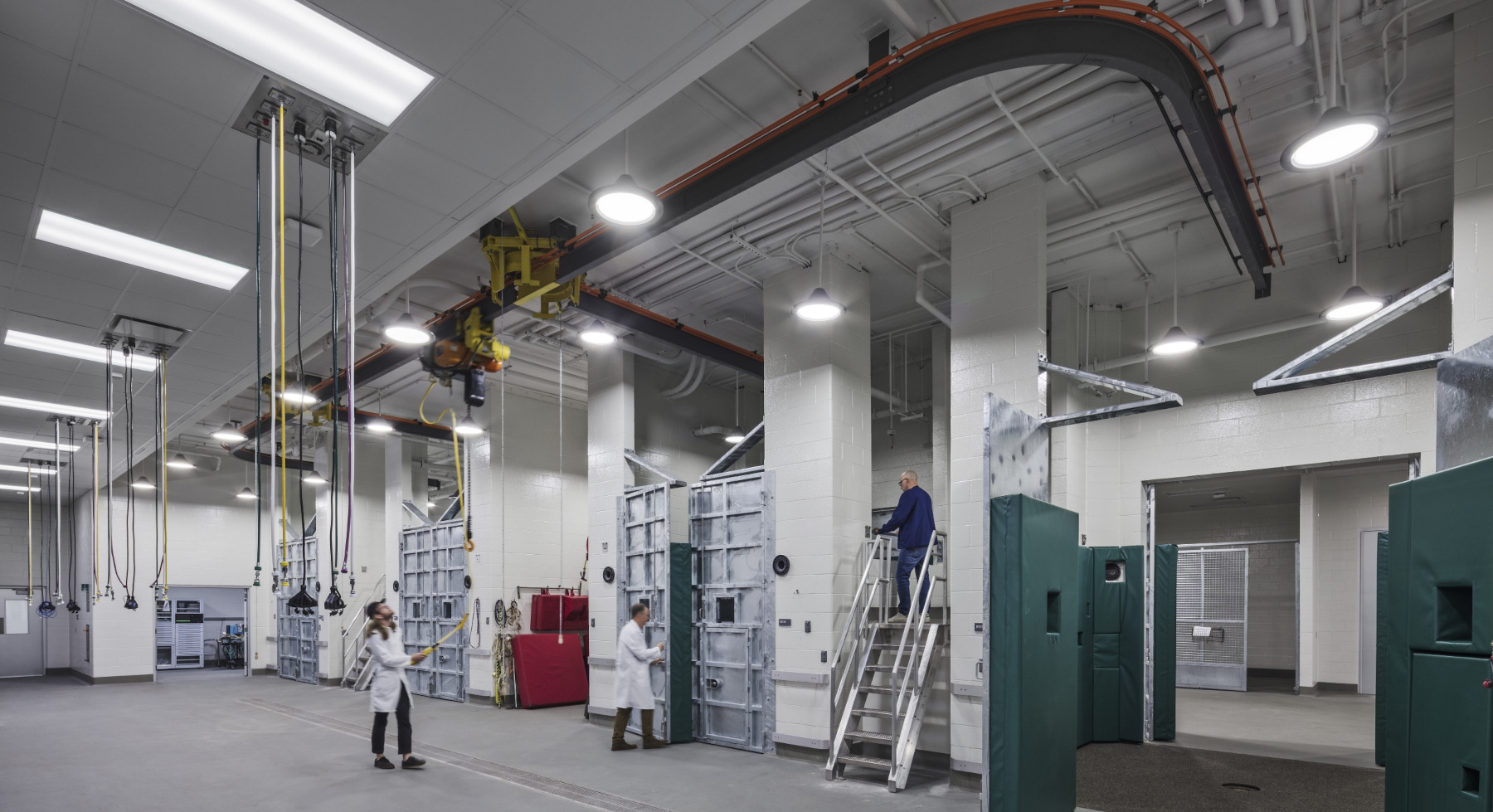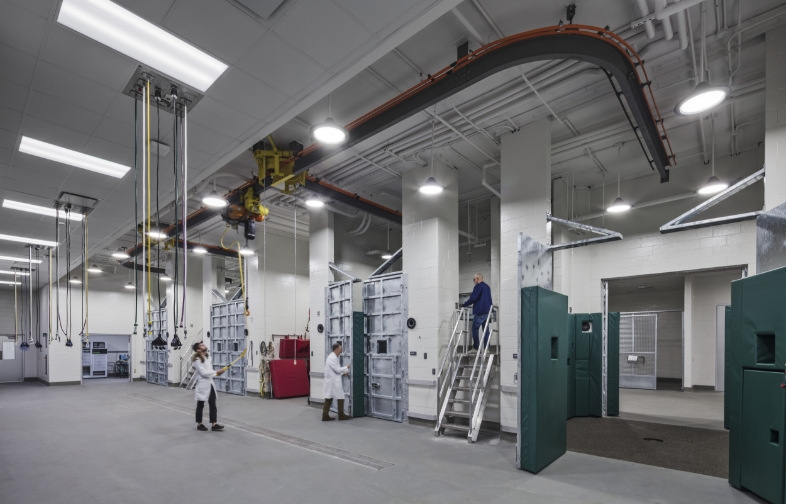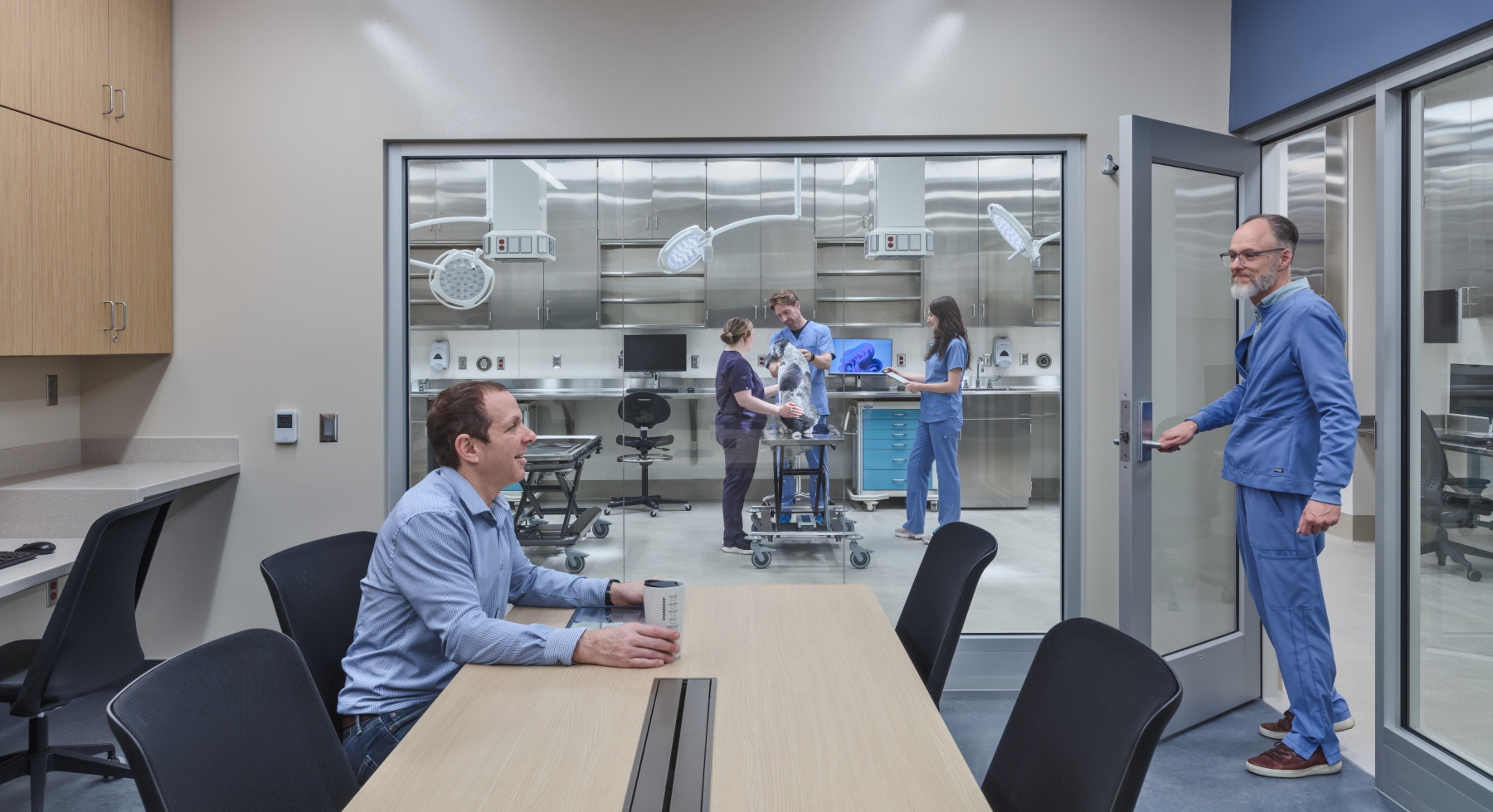
As part of an ongoing series, we recently sat down with two members of Flad's science and technology team to discuss the future of the scientific workplace.
The Hypothesis:
conversations on scientific
research environments
Planning and Designing Veterinary Medicine Spaces
As part of an ongoing series, we recently sat down with two members of Flad's science and technology team to discuss the future of the scientific workplace.
Q: You both have worked on multiple veterinary medicine projects recently. Are there any changes you're seeing in veterinary medicine facility planning?
Rachel Nelan: The profession has changed profoundly in the last 20 years with the advent of specialty medicine for animals. Veterinary medicine clinics and hospitals used to only provide primary care. Patients went to a clinic to see a general practitioner veterinarian, and that vet would go through diagnostics and develop a treatment plan based on what they saw.
Today, much the same as human medicine, the advancements in diagnostics and therapies for animal patients mean specialty care is available for cardiology, neurology, medical and radiation oncology, advanced imaging, and physical therapy among others. Today's veterinary teaching hospitals provide space for specialty medicine in addition to traditional community and general practice. There may be exam rooms and surgery rooms dedicated to specialties such as ophthalmology and orthopedic medicine, where special lighting controls and specialty equipment are permanently housed. We have also witnessed an increased interest in safety for students, faculty, and animals. This translates to ensuring there is adequate space for the entire care team of faculty, students, residents, and technicians that will be working with an animal patient in a treatment or procedure space.
Hooved animals, such as cows and horses, require more space for safe handling. These patients may be frightened by the new surroundings of a hospital environment, in addition to being sick and stressed. It’s frequently desirable to put the animal in a restraint enclosure, a horse stock, or cattle chute, to aid in calming them and providing access to all sides of the animal for faculty and students to work. Chutes and stocks of a size to safety handle 1,500- to 2,500-pound animals increase the floor area required in treatment rooms. In addition, moving the animal throughout the facility requires wide aisles, high ceilings, flooring over which animal transport tables can move anesthetized animals, and overhead hoisting and rail systems to safely transport and maneuver patients.

We have also witnessed an increased interest in safety for students, faculty, and animals.


Lauri Tyrrell: I might add one more piece that I think is interesting about teaching hospitals for veterinarian schools.
In addition to creating exam, treatment, diagnostic, and hospital environments with the equipment and diagnostics that Rachel mentioned, the other part that is so critical for the faculty and students is providing places to learn, conduct daily rounds of patients, and touchdown areas for them to discuss cases in the moment. Prior generations of teaching hospitals provided little in the way of student space, either formally through meeting or rounds rooms or informal collaboration or amenity space.
As you can imagine, it's difficult to design each exam room to accommodate an entire rotation of students. Some exam rooms can include an observation window from the corridor so larger groups can gather outside with the client's permission. Additionally, there needs to be places for casual interactions where students can bump into faculty and students on other service rotations from their own, for the benefit of all. Over the last 10 years specifically, the attention to supporting student success throughout the facilities and at all levels of their education has been a priority.

There needs to be places for casual interactions where students can bump into faculty and students.


Q: How does the concept of One Health impact veterinary medicine planning and design?
Rachel Nelan: The concept of One Health is intuitive. It suggests that if people, animals, and the environment are not all thriving as a system, then none of them will because they're all interconnected.
People and animals contract the same diseases and suffer the same maladies, so, naturally, diagnostics and therapies that are successful in animals often translate into humans. In the case of farm or food animals, the food in the form of grasses and grains, the water they take in, and the air they breathe all contribute to their health as a food source.
Many veterinary schools have rebranded themselves as schools of veterinary medicine and biomedical sciences, for instance, in recognition of this interconnectedness. Particularly on campuses with a college of veterinary medicine and a school of medicine, school of allied or public heath, and colleges of agriculture, the implicit understanding of One Health can thrive. It can be applied to teaching and translational science and research through internal or external partnerships among colleges and through public-private partnerships.
These partnerships frequently result in new diagnostics and therapies being developed through startups and finally entering the market to treat patients. This strengthens the research and research funding potential of the colleges; improves the health of animal and human patients; and enables a robust ecosystem of research, clinical, and development opportunity.
Share your thoughts or questions on these topics or others you'd like to hear our experts address. Email us 

